Horse Racing
“And they’re off!” Horse racing of all types is found in our racing section, including Thoroughbred, Quarter Horse, Harness, Steeplechase and Arabian racing.
Want to get lucky? Take a look at the Wagering to help guide you. Keep track of upcoming horse races and racing events in our Calendar of Events for Horse Racing.
Want to live the dream of owning a racehorse? Check out the Breeding, Partnerships, Sales & Bloodstocks sections where you can help yourself be a force in the Sport of Kings.
Need a place to train your baby and help develop his successful career? You will find both training facilities and professional racehorse trainers in our Training section. See you in the winners’ circle!
Popular Racing Sites
Horse Racing - General Information

Horse racing has always been a popular pastime among people. Since humans first domesticated the horse over six millennia ago, we’ve been finding more intriguing and complex ways to race the animals. A notable variation on horse racing, dating back to the ancient world, is chariot racing. The sport was incredibly popular throughout human history, though especially in Rome and Egypt.
With every athletic competition, there is the inevitable demand for betting. And horse racing is no exception. In fact, it is one of the most popular betting sports today, novibet.ie Sportsbooks cover everything related to horse racing, from the big-name events, to small local competitions. Most offer fantastic odds and excellent bonuses. So, if you are interested, try your hand at online betting.
USA’s Race Horses
The United States has had quite a history with horse racing. Some of the greatest names in the world of equestrian athletes come from the USA. And with events like the Kentucky Derby, the Belmont Stakes, and the Day at the Races, who can be surprised?
In this article, we would like to take a look at some of the greatest horses in history, who have stomped the track at the US’ most notable events. We will discuss their achievements, their greatest moments, and why they deserve to be called “one of the greatest of all time.”
Seabiscuit
In the early-to-mid 20th century, horse racing was at an all-time high. Races were generating incredible revenue, and equestrian athletes were earning exorbitant amounts of money. And in that highly-competitive world, Seabiscuit still stood apart. So much so, that he was the top-earning horse throughout the 1940s. His greatest achievement came in 1937, when he faced off against a fellow champion, and an excellent Thoroughbred in his own right, War Admiral. Seabiscuit defeated the Admiral by four lengths, which earning his the “Horse of the Year” title in 1938.
Numerous films have been made about Seabiscuit, including the 2003 classic, which was nominated for an Academy Award.
Man O’ War
One of the greatest horses to never race in the Kentucky Derby, Man O’ War was among the first three Triple Crown winners. Famous for his wild and violent temper, Man O’ War won 20 out of the 21 career starts. He dominated the Belmont Stakes and the 1920 Preakness, and remains one of the most notable horses in history.
The Secretariat
Finally, we can’t discuss great equestrian athletes without bringing up the cream of the crop. The Secretariat’s fame was so great, that he was included on ESPN’s list of top 20th century athletes, to date remaining the only equestrian athlete to achieve such an honor.
Upon his birth, the Secretariat was called “too beautiful for the track.” And while he certainly was a gorgeous horse, he proved to have a champion’s heart. In his time, the horse set the record in all three of America’s Triple Crown races, and to this day holds the dirt racing record in North America. He is truly one of the greatest horses to have ever run the track.
There are more good articles in our section on Racing & Wagering.
All information on this site is intended for entertainment purposes only. All reasonable efforts have been made to ensure that the accuracy of the content of EquineInfoExchange.com at the time of preparation. Information presented is believed to be reliable but is subject to change at any time, and without notice.
The EquineInfoExchange.com website may contain links to third party websites which are not under the control of EquineInfoExchange.com. These links do not indicate explicit or implicit any endorsement, approval, recommendation or preference of those third party websites or the products and services provided on them. Any use of or access to those third party websites or their products and services is solely at your own risk.

The final Triple Crown race of the 2023 season is fast approaching, as all eyes will be on Belmont Park in early June. The Belmont Stakes will be staged on Saturday, June 10, with a field of horses aged three tackling a distance of 1 ½ miles for the first time.
It promises to be a significant edition of the race, with an early insight into the Breeders’ Cup Classic likely to be available. This year’s race looks set to attract a star-studded field, with runners from the Kentucky Derby and Preakness Stakes both making up a number of the most likely runners.
But, who are the names on the Belmont Stakes 2023 lineup?
Forte
It would be hard to start anywhere else other than the runner that was creating all the buzz in the lead-up to the Kentucky Derby. However, unfortunately, Forte wasn’t able to take his chance at Churchill Downs, as he was forced to bypass the opening Triple Crown race through injury. But, connections have teased that a return to action could come at Belmont Park.
If Forte is in the same form as he was before the late scratch at Churchill Downs, he could be incredibly challenging to overlook for Belmont Stakes glory. The Todd Pletcher runner has won seven from eight starts, which includes victories in the G2 Fountain of Youth and G1 Florida Derby this year. In the latter, he achieved his joint-best speed figure of 102 when holding off Kentucky Derby winner Mage by a length.
Angel of Empire
Brad Cox previously trained the winner of the Belmont Stakes back in 2021, as Essential Quality was a standout winner of the race. He could have a very solid chance of repeating the feat in 2023, as Angel of Empire continues to be a runner that is showing an excellent amount of progression. The Belmont Stakes distance will likely play into his strengths, as he looked to only get going late in the day when third in the Kentucky Derby in May.
That run scored a speed rating of 104, which highlights a considerable career-best effort. He has won two from four starts this season, and his progression could be a difficult factor to overlook when assessing the serious challengers at Belmont Park. It also aids his case that he has been off the track since his run at Churchill Downs.
Read more: Early Leading Contenders For The Belmont Stakes 2023
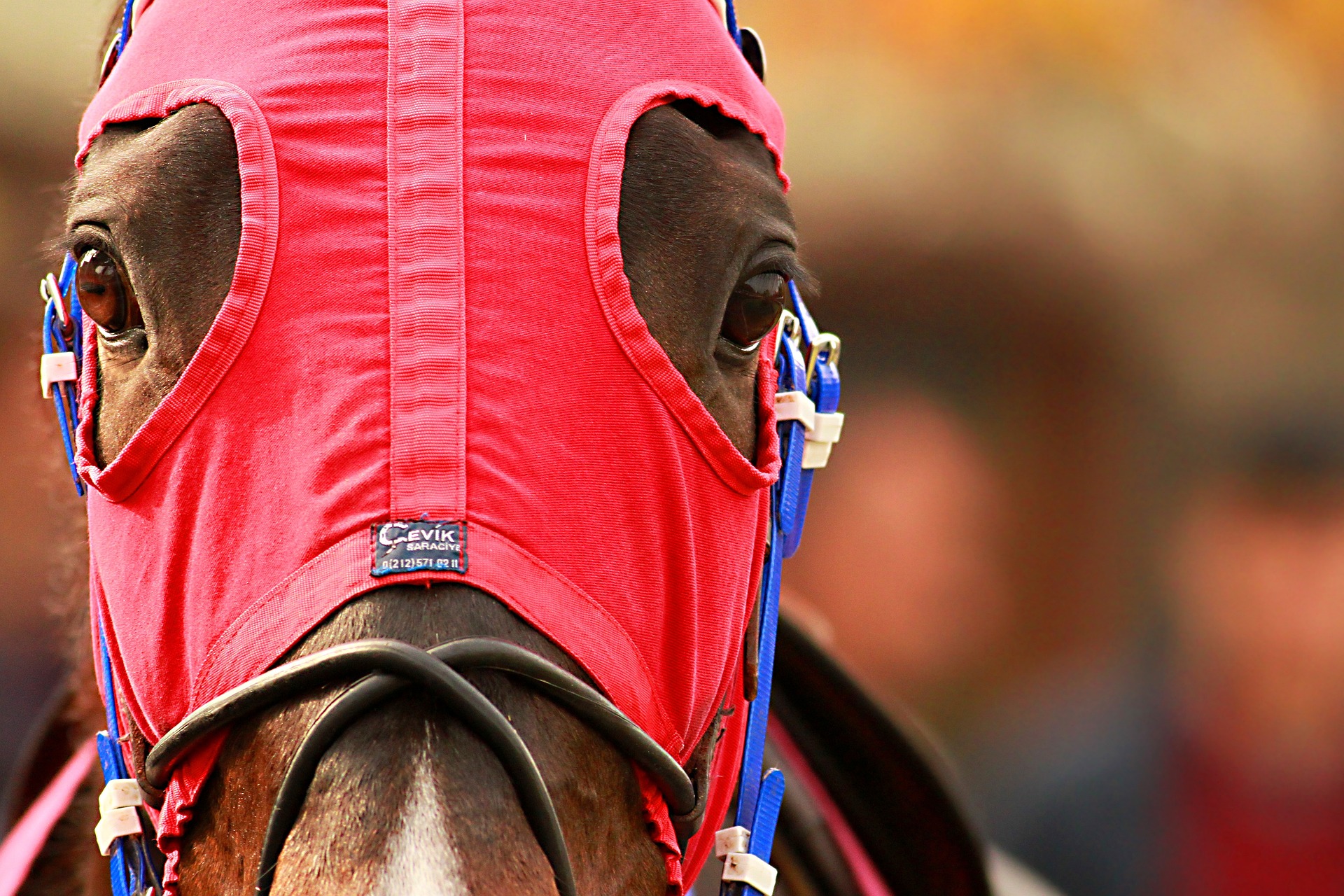
If you are looking for an interesting sport to bet on that will allow you to choose from many alternatives, you will find several options worth it. However, more and more people prefer horse racing because of the sport’s uniqueness. The only bad news is that not all websites offer a quality horse racing betting experience, so gamblers often look for detailed reviews of different sites.
Even though finding a solid bookie for horse racing may take time, Silentbet provides a horse racing betting odds comparison that people can put to the test and find the ultimate website. The reviews also help them learn about the other important elements of the given iGaming brand.
Horse racing is a popular sport in some parts of the globe, but many people are unsure what to expect. Therefore, we’re about to look at a couple of important things everyone must know about it.
The number of markets won’t always be that impressive
Online sports bettors who’re used to wagering on sports like football know that they can always choose from hundreds of options. Only a few of them are worth it, but the good thing is that users have many options at their disposal.
Although horse racing is also a pretty big sport, the reality is different regarding markets. Sure, some of the best in the business will always have at least a couple of options that clients can use. However, most of them only give users access to the standard markets.
Most sports betting fans won’t be bothered by the lack of hundreds of alternatives because horse racing fans usually punt only on a few things. Nevertheless, having access to more options is always a plus, no matter the sport you want to bet on.
Some bookmakers will only allow you to stake on the big horse races
One of the things that horse racing fans need to realize is that not all bookmakers will allow them to wager on the races they like. Some brands prefer to provide more options for other sports, so gamblers can only wager on big horse racing competitions, such as the Cheltenham Festival or other big options.
If you’ve chosen a bookie that only offers those things, you can either look for a new iGaming operator or use virtual horse racing options. The latter is fun, but you can only bet on computer simulations.
Cash Out won’t be available
One of the features that many sports bettors use on a daily basis allows them to control what’s happening with their bet. Cash Out is an option used by people who want to settle bets earlier. It is usually popular among soccer fans, but some clients also use it when they want to stake on basketball, tennis, or something else.
Despite its uniqueness and the fact that it can help horse racing, most websites do not allow people to use it. Therefore, users need to be even more careful when they decide to bet on horse racing.
On rare occasions, bookies may impose a slightly higher minimum bet requirement for this sport
One of the rules that online bettors need to go through is related to the lowest amount of money they have to use to place bets. Although most sites have the same rules for all of their sports, there might be some limitations regarding horse racing. Hence, people who want to wager on this sport may need to use more money than usual.
You can find more great content in our section on Racing & Wagering.
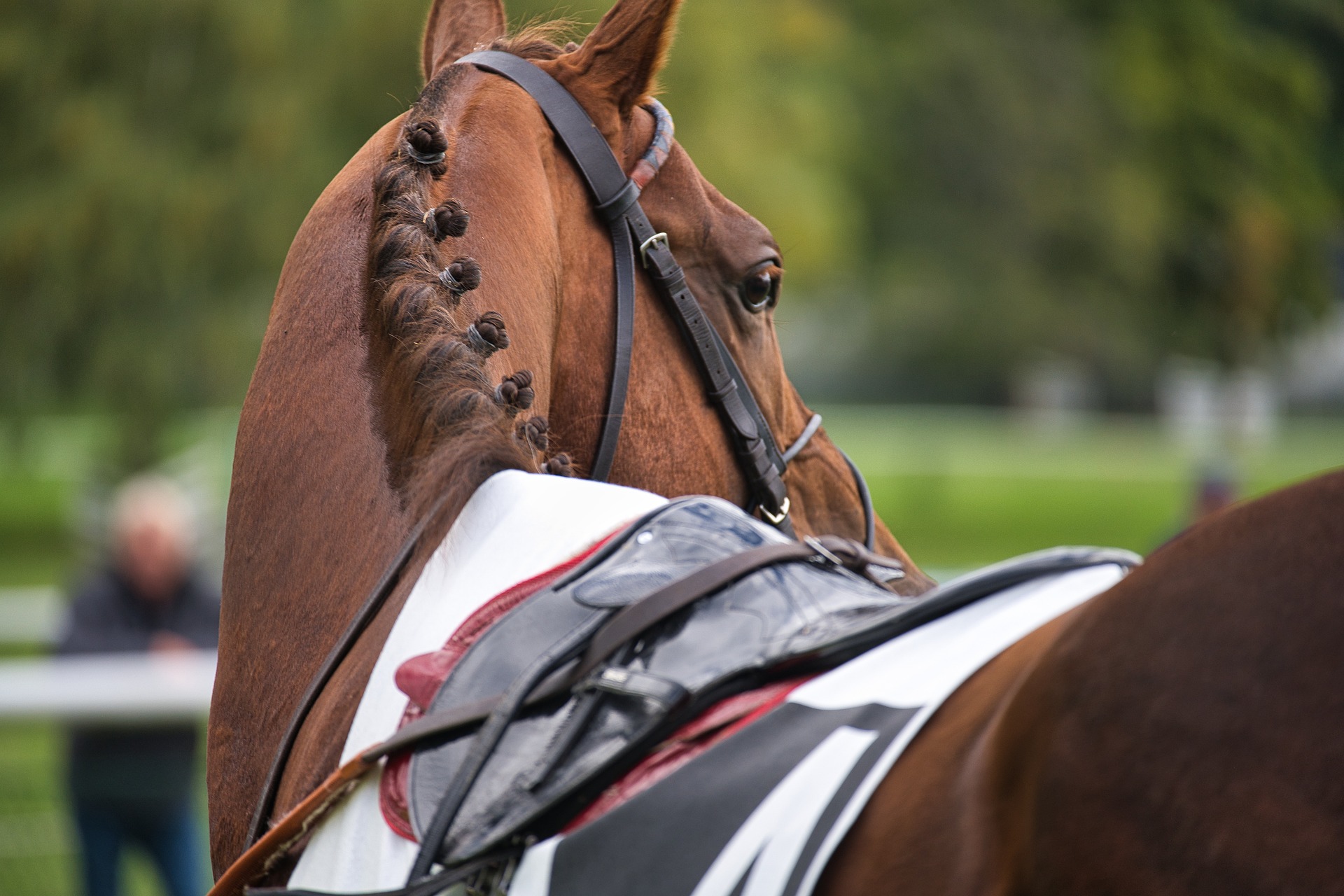
Nothing is more frustrating for a trainer than to see his horse falling at the first fence at Aintree. It is also highly disappointing for the racing enthusiasts who back their favourites only to see them lose at the start. These fans are always on the lookout for latest horse racing odds OR best horse racing odds events and they put a lot of effort into getting their predictions right. In the long history of the Grand National, there have been many famous horses who got themselves ruled out of the competition in this manner, and below we have listed some of them.
1- Aldaniti
Aldaniti and Bob Champion became a source of inspiration for many when they overcame great adversity to win the coveted Grand National. Champion was diagnosed with testicular cancer in 1979 but he recovered in time before the 1981 Grand National while Aldaniti also made a return to horse racing after sustaining a serious leg injury. And then the two went on to win the prestigious race at Aintree in 1981.
Most people are familiar with the astonishing modern fairytale of the turf but what followed is not very well known. The amazing racehorse tried his luck at Aintree in 1982, despite not looking in good form in the 1981-82 season. He was 12 at that time, carrying 10lb more than the previous year.
The 12-1 joint-third favourite fell at the first fence, surprising all his supporters. Champion later admitted that he was "gutted. I hit the floor hard with my stick and my first thought was: 'Can't we start again?'
2- Hallo Dandy
Red Rum achieved the incredible feat of winning three Grand Nationals. Many horses tried to imitate his feat but failed. One such horse was Hallo Dandy, the British-bred Thoroughbred racehorse who was trained by Gordon W. Richards.
Hallo Dandy competed in four Grand Nationals, with the promising horse making his first attempt in 1983 and finishing fourth that time. He wasn’t rated very highly the following year as he had been pulled up in the Hennessey Cognac Gold Cup before the prestigious race. However, Neale Doughty and Hallo Dandy surprised everyone with an impressive performance. Despite facing tough competition from Corbiere (the 1983 winner) and Greasepaint, the Gordon Richards trained horse went to win by a comfortable four lengths.
Hoping to claim back-to-back victories, he entered the Grand National once again, but that time with Graham Bradley as his rider. However, it proved to be a huge disappointment for Hallo Dandy as he fell at the first fence.
At the age of 12, the amazing racehorse tried his luck once more at Aintree but finished last in the race.
3- Double Thriller
Double Thriller looked a promising horse for the 1999 Grand National. He had finished fourth in the Cheltenham Gold Cup that season and was aiming for glory at the Aintree Racecourse. His jockey Joe Tizzard was so confident that he reported to have told the Post. “I’ve got the perfect ride.”
He was sent off the 7-1 joint-second favourite, but suffered the same fate as the other two horses mentioned above – he fell at the first fence.
There are lots of interesting stories in our section on Racing & Wagering.
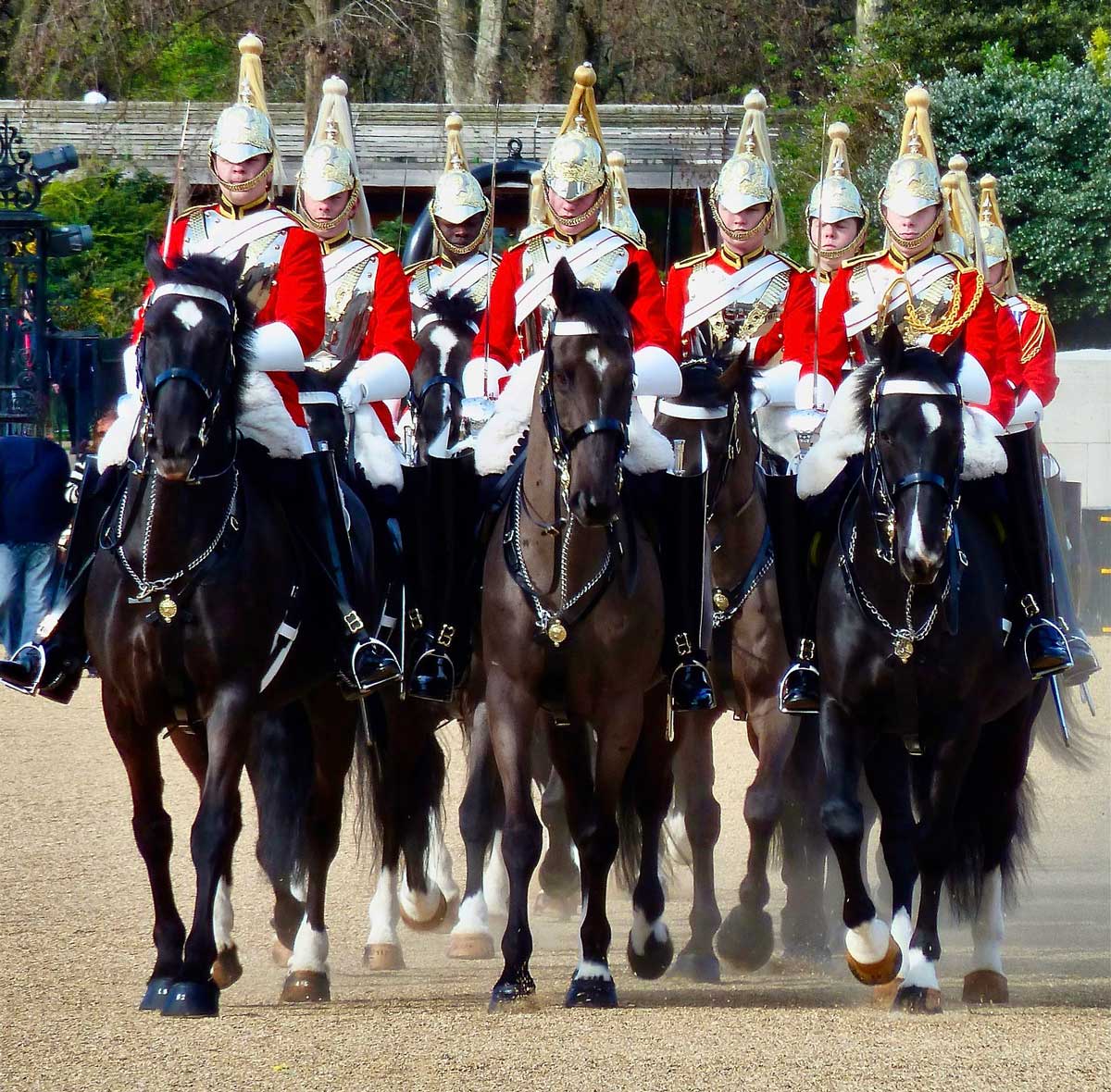
Horses have been an important part of European culture for centuries, and many countries have deep ties to equestrian traditions. From equestrian sports to working horses in agriculture, horses have played an important role in the history and culture of many European countries. And, they still play an active role in society, similarly, online roulette. Here are some of the countries in Europe where horse stables are considered an integral part of their culture.
Spain
Spain is well known for its equestrian traditions, with the Andalusian horse being one of the country's most famous breeds. The Spanish Riding School in Vienna, Austria, is dedicated to preserving the classical dressage traditions that originated in Spain. The sport of bullfighting also has a close relationship with horses, with trained horses called "picadors" used to help weaken the bull before the matador enters the ring.
Italy
Italy has a long equestrian tradition, with horses being used in agriculture and transportation for centuries. The country is also home to the Carabinieri Cavalry, a branch of the Italian police force that has a long history of using horses in their work. The Palio di Siena, a horse race held twice a year in the Tuscan city of Siena, is also an important part of Italian equestrian culture.
France
France has a rich equestrian tradition, with the country being home to some of the world's most famous horse races, such as the Prix de l'Arc de Triomphe and the Grand Prix de Paris. The country is also home to the famous Cadre Noir, a military riding school dedicated to preserving classical dressage techniques.
Ireland
Ireland has a strong equestrian tradition, with horses playing an important role in the country's agriculture and sport. The Irish thoroughbred is a famous breed of horse, with Ireland being home to some of the world's most famous horse races, such as the Cheltenham Festival and the Irish Derby.
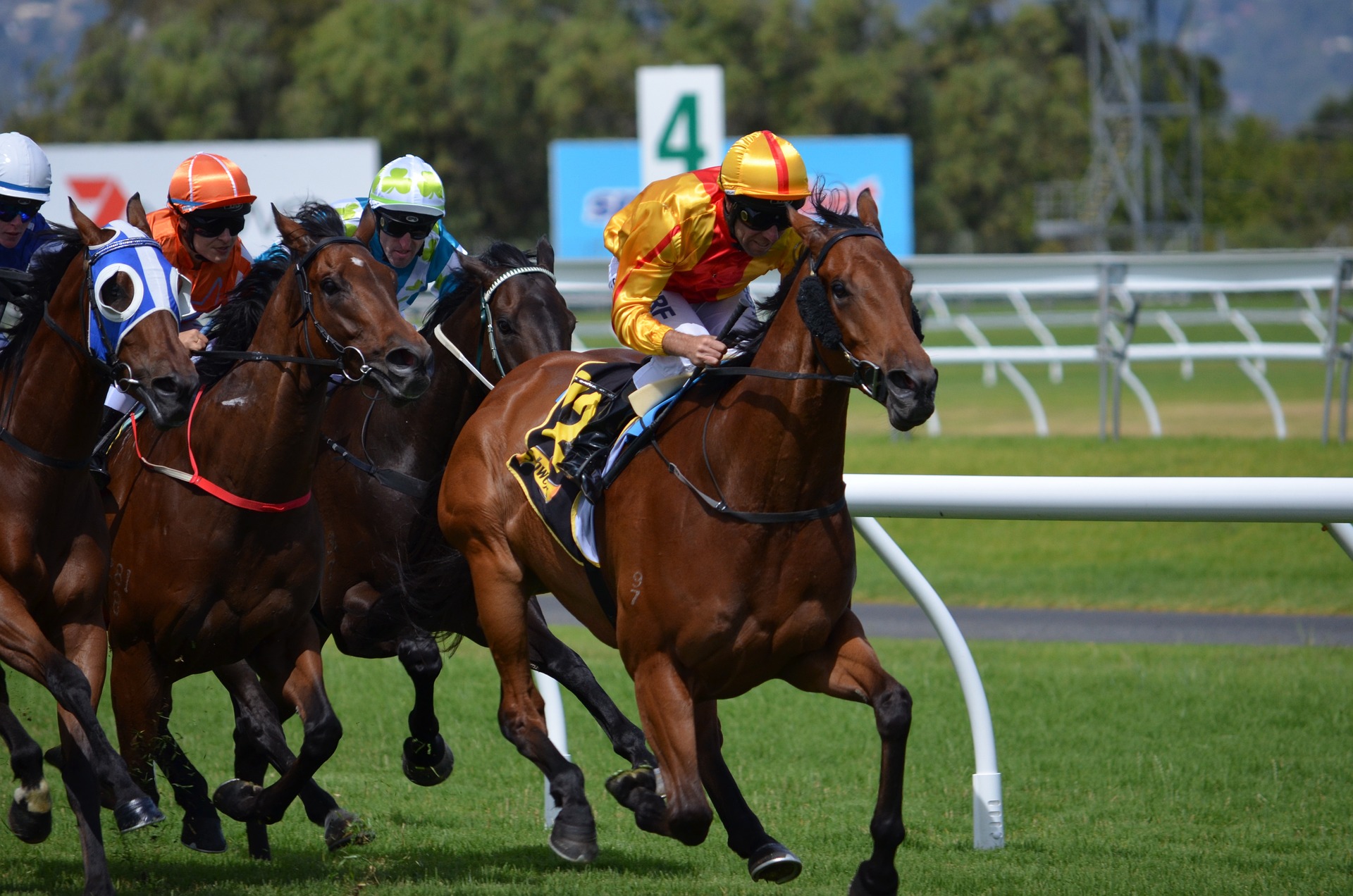
Several years ago, online bookmakers could have a lot of clients simply by offering different sports, good odds, and many markets. However, the situation now is different because punters who like horse racing and other sports always seek bonuses.
Not all iGaming operators are suitable for betting on horse races because only a few offer enough options. Luckily, professional reviews help clients find what they want because Efirbet offers traditional sports betting in addition to horse racing wagers, and users can learn more about the hottest sites in minutes.
Many things make an iGaming operator suitable for horse racing, and bonuses are one of them. Some companies provide way more perks than others, so let’s learn more about them and see what we can expect to have access to.
No deposit bonus for horse racing
Despite being among the most popular sports in the world, people who want to wager on horse racing will have to use real money. Everyone is looking for a way to wager for free, which is why some of the world’s leading gambling operators started offering a promotion known as a no deposit bonus,
Horse racing fans with access to this perk can get it and wager on something they like without the need to use their balance. If they win, the bookie will require them to make a real transaction and wager the specific amount before withdrawing it.
Cashback bonuses
Even though most online sports bettors are not fans of the cashback bonuses because they are not that good, this is not the case for horse racing. People who like this sport are thrilled when they can bet on something and receive some of the amounts they’ve lost if they do not predict the race. Horse racing may seem easy to predict, but we must remember that it is one of the most complicated sports, so users must be careful.
The cashback amount and the percentage will vary, depending on the online bookmaker. Usually, it starts from around 10% and can reach up to 30%. As for the maximum amount, the top-tier horse racing websites limit it to the amount used to place the bet. Check the horse racing calendar to see when a race may offer this promo.
Free bets
Often confused with no deposit bonuses, free bets are a common way for online bookmakers to reward their clients who like betting on horse racing. One of the main differences between the free bets and no deposit offers is that the first one is only available for a specific race. In other words, you can’t bet on whatever you want.
Other than that, these 2 proposals have standard requirements because clients will have to make a deposit and/or complete a rollover requirement. What’s interesting about the horse racing free bets is that the wagering condition is not as high as the one for football or other popular sports.
Boosted odds for some horses
The last and most common reward that horse racing fans will find once they start betting is related to the boosted odds they can get when wagering on some horses. Usually, this offer is only available when there is a big tournament, but some online bookmakers may also offer it for a random horse racing event.
The boosted odds give people the opportunity to win more money than usual. Of course, they can only do that if they predict their bet, which is why some iGaming fans read a lot of guides for betting on horse racing.
There are lots of informative articles in our section on Racing & Wagering.
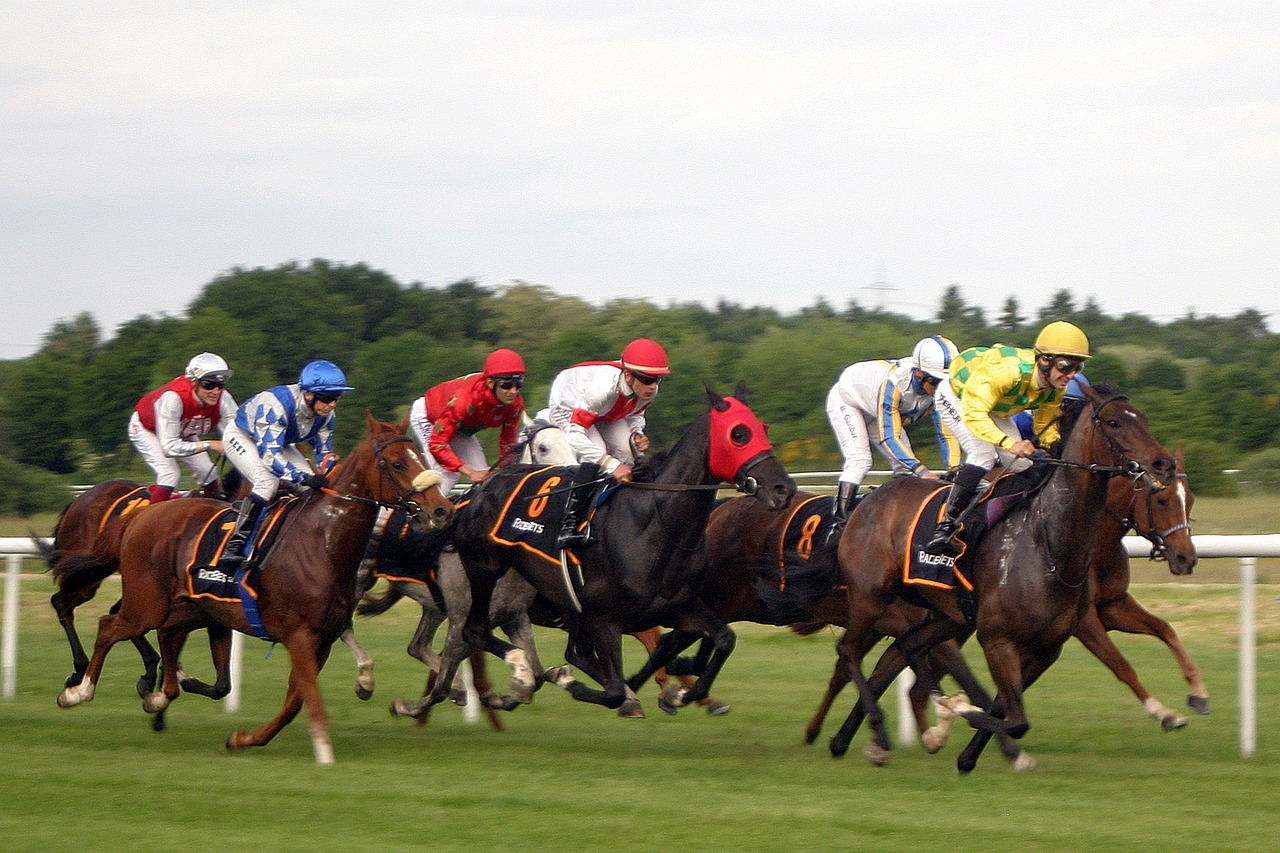
One of the perks of online betting is that you can find all sorts of sports and wager on them wherever you go. There is no arguing that soccer s the go-to option for most gamblers, but in recent years, horse racing is becoming more popular by the day. Hence, a lot of sites started focusing more on this sport.
Speaking of sites, some users may have a problem finding a bookie that offers enough options for horse racing. Thankfully, Nostrabet provides access to bet on horse races from your home because the site contains reviews of the best operators in the business. The professionals have gone through all top-tier operators in the industry and ranked them based on what they offer.
Some gamblers might be a bit surprised by the recent boom in the popularity of horse racing, whereas others aren’t. Since most readers probably fall into the first category, let’s go through some of the reasons why horse racing is growing in popularity on a daily basis.
The sport provides better odds than most other things
Let’s just address the elephant in the room - most people bet on the sport that provides the best odds. Sure, having the chance to wager on new markets all the time is a plus, but gamblers won’t choose the specific sport unless the odds are good. This is where it gets interesting because horse racing is one of the sports with the best odds in the world.
Due to its specifics and the fact that bookies consider it difficult to predict, they often provide much higher odds than usual. Consequently, people who decide to punt on this sport will have access to amazing odds, regardless of the market.
What’s interesting about horse racing is that the odds are good for all markets. Everyone knows that the options here are not like those for other sports, which makes horse racing even more special.
The sport is fun to watch
If we put the advantages of betting on horse racing aside, we also have to address the fact that horse racing is incredibly interesting to watch. Whether you’re someone who follows the sport up close or a casual fan, you will always find the races interesting. Speaking of races, you can watch competitions from all over the world, and all of them are fun.
Read more: Why is horse racing slowly becoming the preferred option for online bettors?

The 2023 Cheltenham Festival was once again a successful event on the international National Hunt calendar. There were some memorable performances that will go down in history in the sport.
This year’s Festival also gave us an insight into who the biggest stars are going to be in jump racing over the next few years across the respective divisions, with Constitution Hill and Galopin Des Champs among those who stole the headlines.
Constitution Hill Produced Monster Performance to Showcase His Class
Heading into this year’s Champion Hurdle, Constitution Hill had already established himself as a hurdler who could be very special. He has won all five of his previous appearances over hurdles comfortably, including in the Supreme Novices’ Hurdle, Fighting Fifth Hurdle, and Christmas Hurdle, three Grade One races.
The Champion Hurdle was set to be the horse’s biggest test so far, with 2023 Irish Champion Hurdle winner State Man being a strong rival. However, Nicky Henderson’s star blew the field away again, coming home at a canter at Cheltenham. Just like he had previously, he scored with ease in arguably what was the performance of the week.
Constitution Hill is now being compared with the greatest hurdlers of all time, and he has left his connections with a big decision to make over the summer months. They need to decide if they should remain over hurdles and win as many Champion Hurdles as possible, or if to switch their horse to fences to take on races like the Arkle Trophy and Cheltenham Gold Cup.
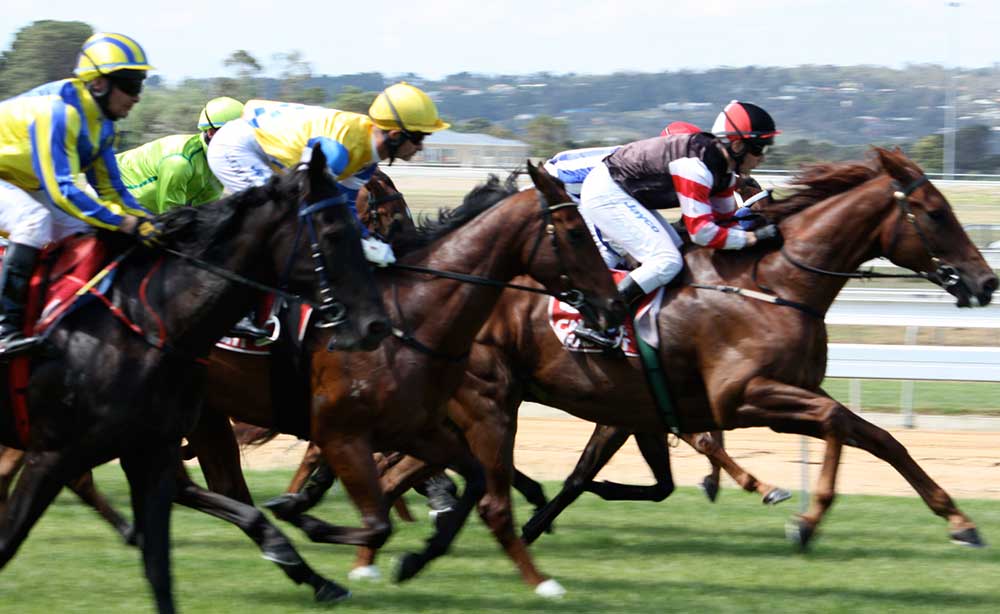
Are you a horse racing fan that has experienced the rush of cheering on your favorite from the grandstand? Have you stood at the rails of the winner's enclosure and taken in the excitement and celebrations of trainers, jockeys, and owners after their horse has crossed the line in front?
If the answer to the above is yes, then why not get in on the act yourself by becoming a racehorse owner? It may seem like an unachievable dream given that the majority of owners are millionaires and the parade ring has become their playground, but thankfully, the dream is becoming a reality for more and more fans, thanks to the likes of Raceshare and their racing syndicate system.
What are Racing Syndicates?
As mentioned above, companies such as Raceshare have made the dreams of those wishing to own a racehorse much more achievable. Racing syndicates are put together to allow people from all different walks of life to experience the inner workings of racehorse ownership.
Whether it be friends, family, or complete strangers joining together, syndicates can bring you to places you could never have dreamed of and allow you to rub shoulders with members of the racing world that you have always admired from afar.
What Can You Expect?
For a small share price each year, being part of a racing syndicate includes the purchase of your horse, the training costs of your horse, and much, much more.
Syndicate members enjoy all the privileges of every other racehorse owner, whoever they may be. The sport of horseracing is very much an inclusive world, and you will have regular updates on your horse and visits to the yard to watch your horse being put through their paces close up.
When it comes to the day of the race, you will also experience everything that even the richest owners enjoy. Watch as your equine star struts its stuff around the parade ring, enjoy the bravado of the owners' lounge, and, hopefully, see your horse forge clear of the field to record victory.

The Kentucky Derby has come around so fast, and now we are all super excited to find out more about the horses that will be FanDuel's Kentucky Derby contenders and who will be the highest ranking of all.
Of course, the most exciting aspect is who will end up winning, and whether we will see a Triple Crown winner this year! We are seeing some old favorites, some new legends, and some unique talent this year, so the races are highly anticipated, and everything is incredibly exciting!
However, there are eyes on one horse in particular, and if you are only just catching up with the horse profiles for this year's Kentucky Derby, we are happy to introduce you to this horse! Arabian Lion Career Statistics
Arabian Lion is a 3-year-old colt foaled by May 2020 to Justify and Unbound. As of the last start he was ridden by Irad Ortiz, Jr, and trained by Bob Baffert. Much like Arabian Knight, Arabian Lion was sold to Zedan Racing Stables.
However, Arabian Lion has quite a lot to boast about so far, having made 2 starts in 2023 so far, with 1 second, making his earnings this year, $87,000 already. Over his career, he has made 5 starts with 1 first and 2 seconds totaling $157,600 in earnings overall.
Career Earnings
In 2022, Arabian Lion won 1 race and came second in another over 3 starts making $70,600 that year, and making $23,533 per start. His success has seen quite a decent amount of earnings. However, it is expected that this year he will perform better than last.
Why? Well, those who track horse racing will have a good idea as to why!
HRN Speed & Race History
He has fluctuated in his HRN speeds. However, he is a hopeful choice due to his lineage as well. He is 3 years old and was sired by Justify, trained by Bob Baffert, and racing for Zedan Racing Stables, things already look good.
In the fall of last year, his HRN Speed was at 100, but in November it dropped to 98, and then in December to 79, however, in February 2023 it shot up to 93, and now projections anticipate an incredible increase, expecting 105 or so by the Kentucky Derby!
So, what is there to know about his race history?
| Date | Finish | Track | Distance | Surface | Race | 1st | 2nd | Time |
| 10/9/22 | 1st | SA | 6F | Dirt | MSW | Arabian Lion | Elwood Blues | 1:09:78 |
| 11/4/22 | 2nd | KEE | 7F | Dirt | Alwoc | Giant Mischief | Arabian Lion | 1:22:3 |
| 12/17/22 | 5th | LRC | 1 1/16 M | Dirt | 2022 Los Alamitos Futurity | Practical Move | Carmel Road | 1:41:65 |
| 2/4/23 | 4th | SA | 1 1/16 M | Dirt | 2023 Robert B/Lewis | Newgate | Hard To Figure | 1:43:11 |
| 4/15/23 | 2nd | KEE | 1 1/16 M | Dirt | 2023 Lexington | First Mission | Arabian Lion | 1:43:74 |
While Arabian Lion does not have an incredible amount of wins in his racing history, he has never fallen below 5th and has managed to be in the top 2 horses on more than one occasion. He is also showing improvement as the 2023 year has gone on
We have to simply hope that his decline over the winter months was due to the cold, and perhaps that we will see 1st and 2nd place achievements from him in the warmth of summer. However unlikely this may sound.
Arabian Lion Biography
So, who is Arabian Lion?
Well, he won his career debut in a 2-year-old maiden race in October 2022, he won at first asking for the trainer in a typical wire-to-wire fashion as he won by a margin of 3 lengths in a 7-horse field.
Fresh off of this win, he ended up sent to Keeneland for his second start with a $160,000 allowance race on the Breeder’s Cup undercard in November. He was sent off as the 3-5 favorite in a field of 10 horses, but he had to settle for 2nd place, beaten by a measly ¾ of a length by Giant Mischief.
He attempted to do better in his next start, which was in California in the 2nd Grade Los Alamitos Futurity for $200,000. He was favored again, however, it was not his day and he ended up 5th. He had pressed the pace into the second turn, but he emptied too fast and fell back.
After this, he raced on February 4th, at the Robert B. Lewis Stakes at Santa Anita on the 4th of February in 2023. Arabian Lion was sent off with great offs, but he finished last in the 4 horse race.
Finally, he made it to Keeneland again on April 15th of 2023 and managed to pass in 2nd. It was a close call, but he made it.
Overall
While he has slacked quite significantly in the past few races, he has a lot of potential to be seen at Kentucky, and we are certain he will show his true power when the race begins. Every horse has their down days, we are certain that for Arabian Lion, the Derby won’t be one of them.
There are more interesting articles in our section on Racing & Wagering.
- Biggest US Horse Racing Events For This 2023
- Constitution Hill Team Considering Fences Next Season
- Honeysuckle’s Final Win Will Go Down in Cheltenham Folklore
- Noble Yeats Among 85 Horses with Grand National Entries
- Three Essential Equine-Themed Slot Games While Away from the Stables
- A Guide to Slingo Racing
- BetAnySports: Action-Packed Racebook With Great Promos
- 5 Horses to Keep an Eye On Ahead of the 2023 Cheltenham Festival
- A Brief History of Horse Racing in the United Kingdom
- Facts About Horses That You Didn’t Know









